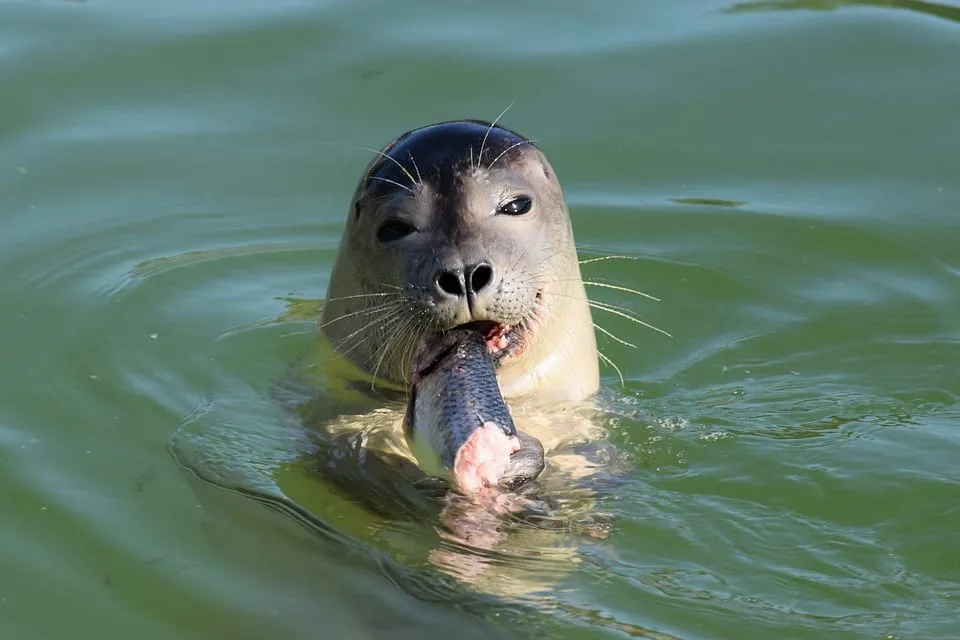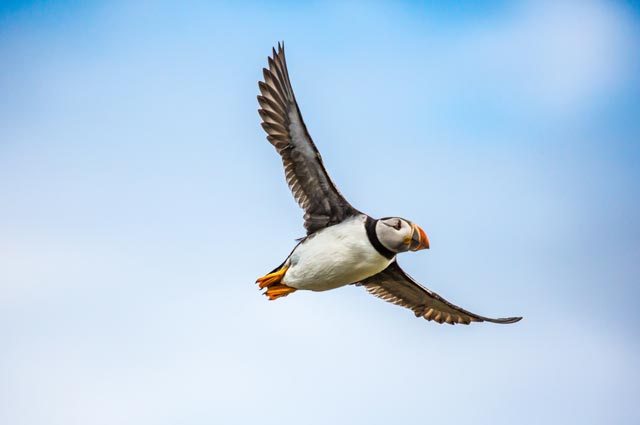Photo credit: Anna Jones
Spotting the Feeding Frenzy
Spotting the feeding frenzy can be easy if you Look for gannets circling & diving. While out on our trips looking for dolphins, we often use the gannets as an indicator that dolphins may be around. Visible from a great distance away due to their bright white feathers and large, 2-metre wingspan, spotting gannets circling and diving can mean dolphins are feeding underneath, pushing the fish closer to the surface of the water, creating an easy opportunity for the gannets to grab some fish for themselves. When a feeding frenzy is occurring, gannets can gather together in their hundreds and be seen from hundreds of metres away! When gannets spot an opportunity to catch a fish, they tuck their wings in to streamline their bodies and plummet towards the water at up to 60mph, inflating air sacs in their head, neck and shoulders to cushion the impact. Beneath the chaos of gannets falling from the sky, dolphins surface at great speed creating large splashes as they work as a team to corral the shoal of fish together into a large tight-knit bait ball making it easier for them to pick off fish.
Feeding Frenzy in Action
If we are lucky, we may even see bluefin tuna breaching the surface as they move at speed in excess of 40mph in pursuit of the same bait fish as the dolphins. The Atlantic bluefin tuna have been making a comeback to British waters in recent years as it is thought that conservation efforts have been helping this endangered species bounce back, which has allowed us an increasing number of sightings of this impressive animal in the last couple of years, particularly feeding in conjunction with other species like common dolphins.
Often when a feeding frenzy is occurring, we are treated to sightings of minke whales, circling around the periphery of the feeding dolphins and tuna. Minke whales are frequently found as solitary animals but can congregate in larger groups where food is abundant, so feeding opportunities like this provide the best chance of spotting multiple whales in one place. Minke whales will gulp feed on a wide variety of fish. They will travel through the water with their mouths wide open and expanding their pleated throats to engulf the large volumes of water, which they then sieve through their baleen to leave only the fish to be swallowed whole.
It is a very humbling feeling to have a front seat for such a spectacle and leaves passengers and crew alike, stunned. Seeing these kind of feeding events in wildlife documentaries like Blue Planet might make you think you would have to travel across the world to witness one, but we are lucky enough to have these wonders of nature occur right here in Cornish waters!
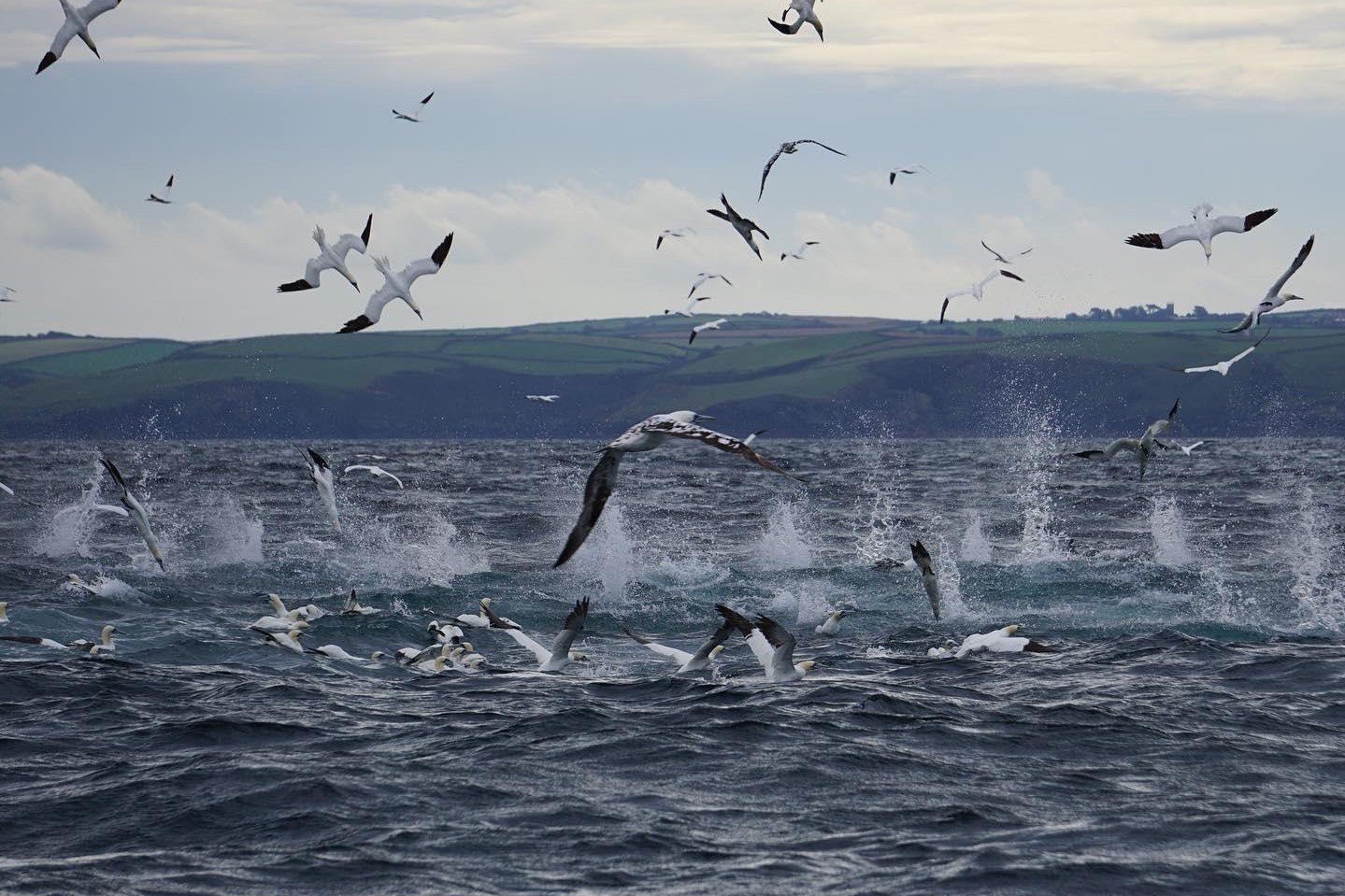
What triggers a Feeding Frenzy?
Feeding frenzies are triggered by a large amount of shoal fish prey in a concentrated area in the sea. When fish or other prey species gather in large numbers, it becomes a feast for dolphins, northern gannets, whales and other predator species. This leads to an extraordinary display of synchronized feeding behaviour, where marine predators will take advantage of the opportunity to fill their stomach!
This unreal event happens once in a while around the Cornish coast. luckily we’ve been able to capture footage from our experience on our boat trips.
Northern Gannets in Feeding Frenzy
Northern Gannets, known for their impressive diving skills, are a key indicator of a feeding frenzy in Cornwall’s waters. These birds, with their striking white and yellow heads, gather in large numbers above schools of fish. As they plunge into the water at high speeds to effortlessly catch their prey. Witnessing this incredible display of Cornwall’s animals and precision is a jaw dropping experience, right here in our own Cornish backyard.
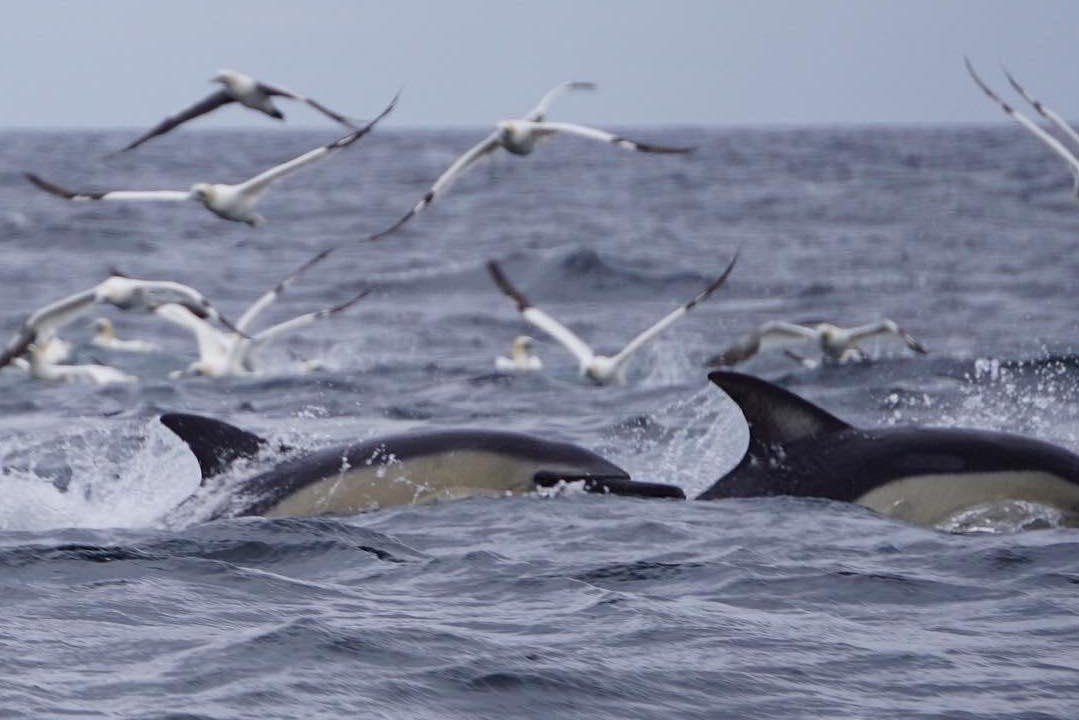
Common Dolphins in Feeding Frenzy
Common dolphins can often be seen surfacing in front of gannets during a feeding frenzy in Cornwall. These playful and energetic marine mammals are known for their acrobatic displays and social behaviour. Keep an eye out for their sleek bodies leaping and diving alongside the diving gannets, creating a captivating spectacle of nature’s harmony right before your eyes.
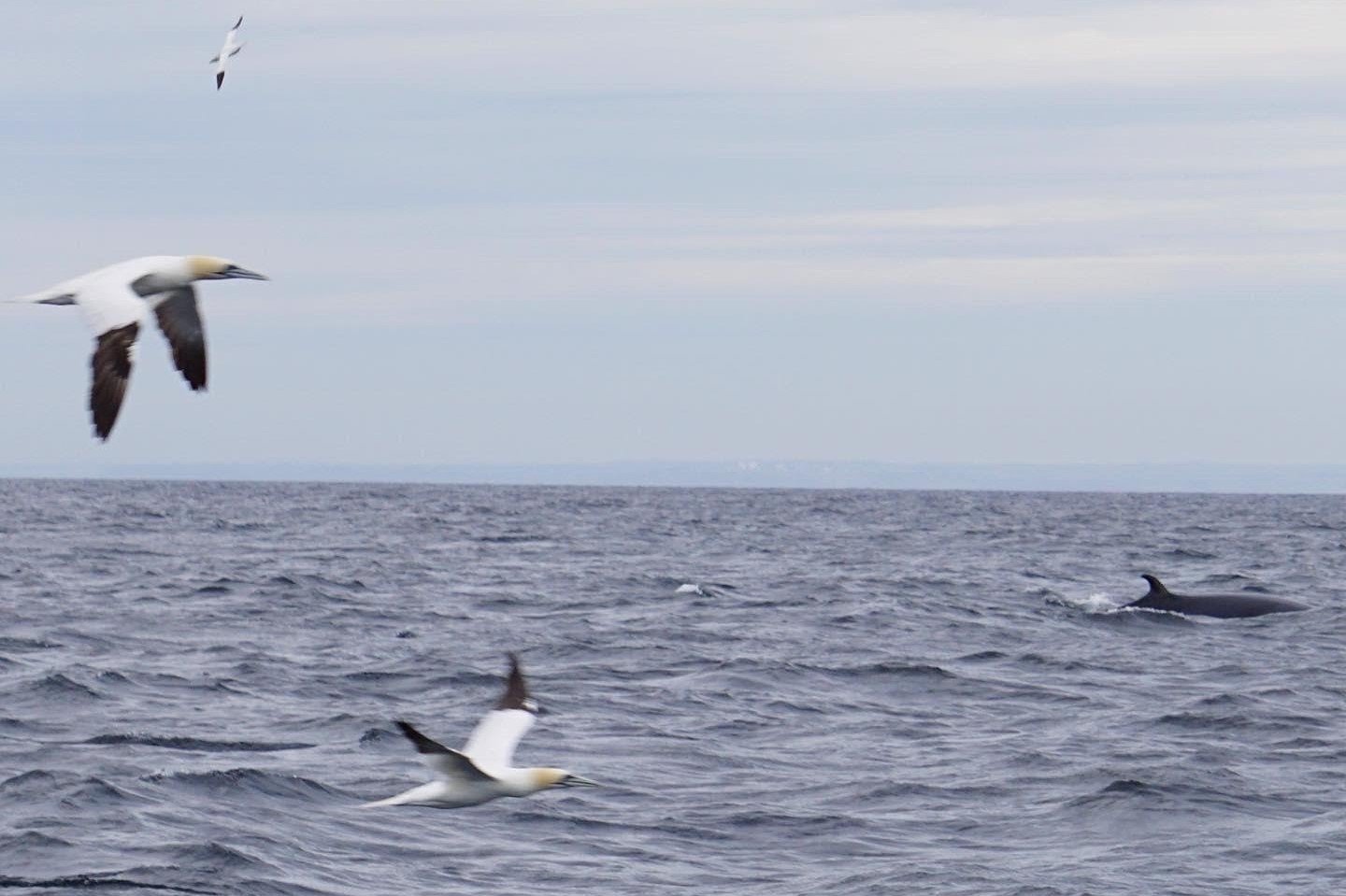
Minke Whales in Feeding Frenzy
Minke whales also join the feeding frenzy in Cornwall, adding to the breath taking spectacle. These magnificent creatures, with their streamlined bodies and distinct white markings, often surface alongside the common dolphins and gannets. Witnessing their powerful dives and graceful movements is a true testament to the wonders of marine life in our own backyard.
Best Places to spot a Feeding Frenzy
You’re able to spot feeding frenzies all around Cornwall but the best place we have found are out at sea not on the coast and when you’re nearer the feeding frenzy its a surreal experience that you will not forget.
The best chances is to book one of our 2 hour boat trips which gives you the best chance of seeing a Feeding frenzy up-close in Cornwall.
